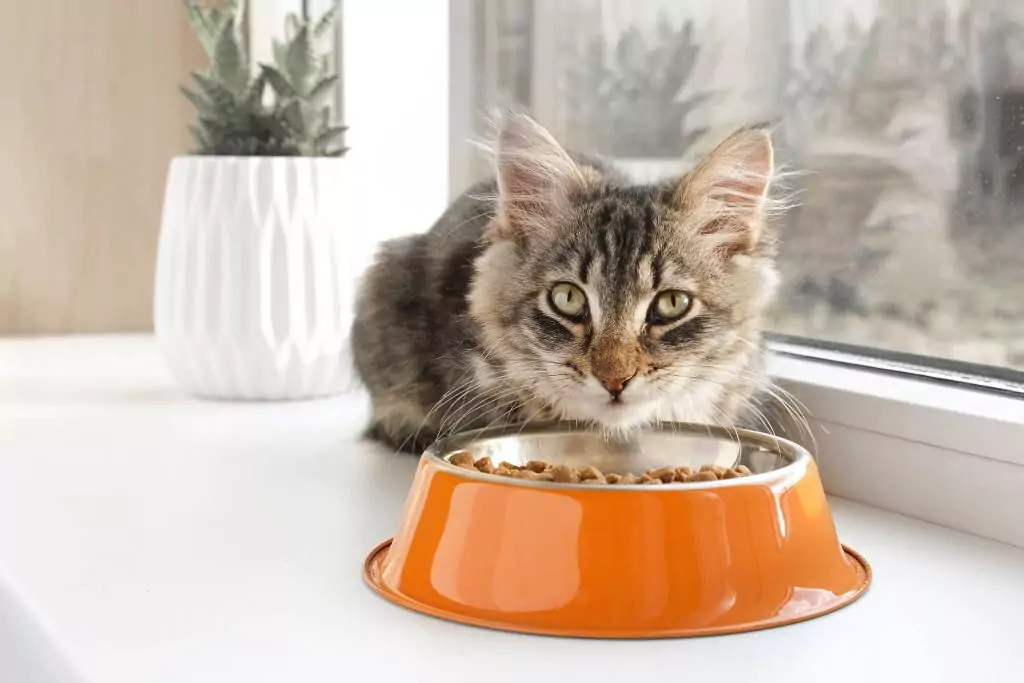Introduction
Feeding your cat the right amount of food is crucial for their overall health and well-being. Overfeeding or underfeeding your cat can lead to a range of health problems, including obesity, diabetes, and digestive issues. In this post, we will discuss the importance of feeding your cat the right amount of food and provide tips on how to determine the right amount and type of food for your cat’s needs.

Understanding Your Cat’s Nutritional Needs
A balanced diet is essential for your cat’s health. Cats require a mix of protein, fat, carbohydrates, vitamins, and minerals to maintain their health. Protein is particularly important for cats, as it helps to build and repair tissues and supports their immune system. Fat provides energy and helps to maintain healthy skin and coat. Carbohydrates provide energy, and vitamins and minerals are essential for overall health.
Factors That Affect How Much Food Your Cat Needs
Several factors can affect how much food your cat needs, including their age, weight, and activity level. Kittens and young cats require more calories than adult cats, and senior cats may require fewer calories. Overweight cats may need to eat less food, while underweight cats may need to eat more. Activity level is also an important factor to consider, as more active cats may require more calories than less active cats.
The Importance of Portion Control for Your Cat’s Health
Overfeeding your cat can lead to obesity, which can increase the risk of health problems such as diabetes, arthritis, and heart disease. Portion control is essential for maintaining a healthy weight and preventing health problems. It is important to measure your cat’s food and avoid free-feeding, which can lead to overeating.
How to Determine the Right Amount of Food for Your Cat
To determine the right amount of food for your cat, you need to calculate their daily caloric needs. This can be done by multiplying their weight in pounds by 20 and adding 70. This will give you the number of calories your cat needs per day. You can then adjust their food intake based on their weight and activity level.
Different Types of Cat Food and Their Nutritional Value
There are several types of cat food available, including dry, wet, and raw food. Dry food is convenient and can help to clean your cat’s teeth, but it may not provide enough moisture. Wet food is more hydrating and can be a good option for cats who do not drink enough water. Raw food is becoming increasingly popular, but it is important to ensure that it is nutritionally balanced.
The Role of Age and Activity Level in Feeding Your Cat
As mentioned earlier, age and activity level are important factors to consider when feeding your cat. Kittens and young cats require more calories than adult cats, while senior cats may require fewer calories. More active cats may require more calories than less active cats.
Common Mistakes to Avoid When Feeding Your Cat
Common mistakes that cat owners make when feeding their cats include overfeeding, feeding the wrong type of food, and not measuring their cat’s food. It is important to avoid these mistakes to ensure that your cat is getting the right amount and type of food for their needs.
Tips for Maintaining a Healthy Weight in Your Cat
To maintain a healthy weight in your cat, you can feed them smaller, more frequent meals, provide them with plenty of exercise, and avoid feeding them table scraps. It is also important to monitor their weight and adjust their food intake as needed.
Signs That Your Cat is Over or Underfed
Signs that your cat is overfed include weight gain, lethargy, and changes in appetite. Signs that your cat is underfed include weight loss, weakness, and a lack of energy. If you notice any of these signs, it is important to adjust your cat’s food intake and consult with your veterinarian.
Consulting with Your Veterinarian for a Personalized Feeding Plan
Consulting with your veterinarian is essential for creating a personalized feeding plan for your cat. Your veterinarian can help you determine the right amount and type of food for your cat’s needs and monitor their weight and overall health.
Conclusion
Keeping track of how much cat food to feed a cat is essential for their health and well-being. By understanding your cat’s nutritional needs, adjusting their food intake based on their age and activity level, and avoiding common feeding mistakes, you can help to ensure that your cat maintains a healthy weight and avoids health problems. Remember to consult with your veterinarian for a personalized feeding plan for your cat.